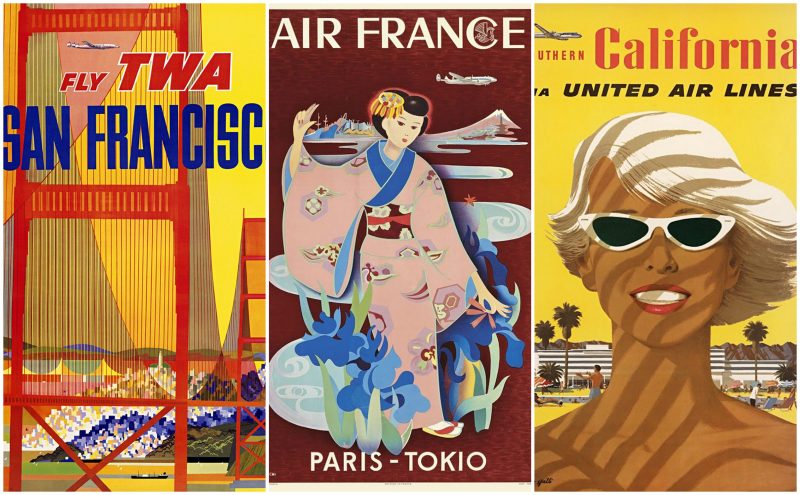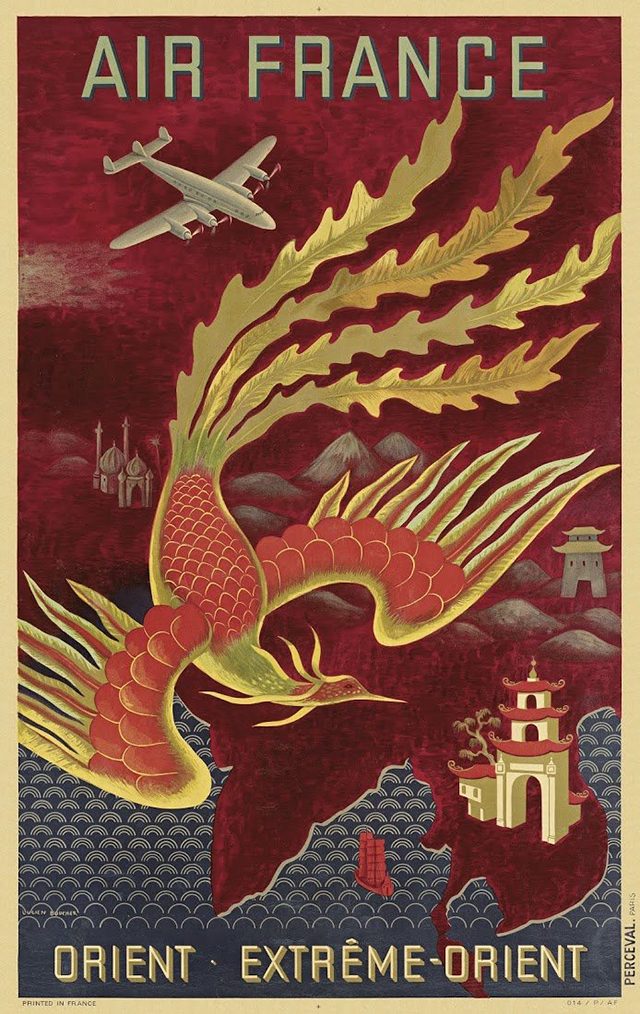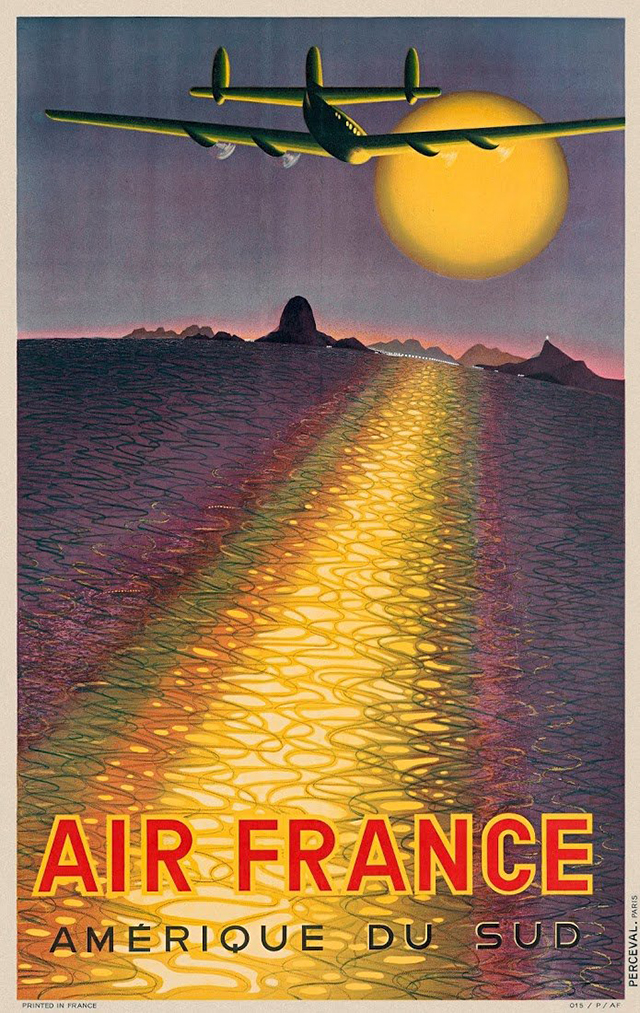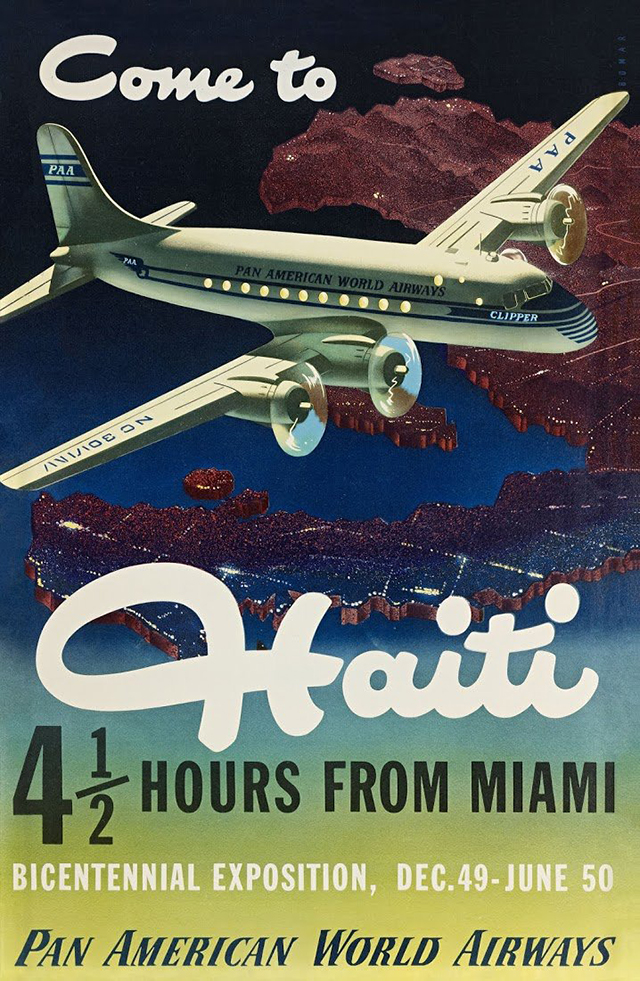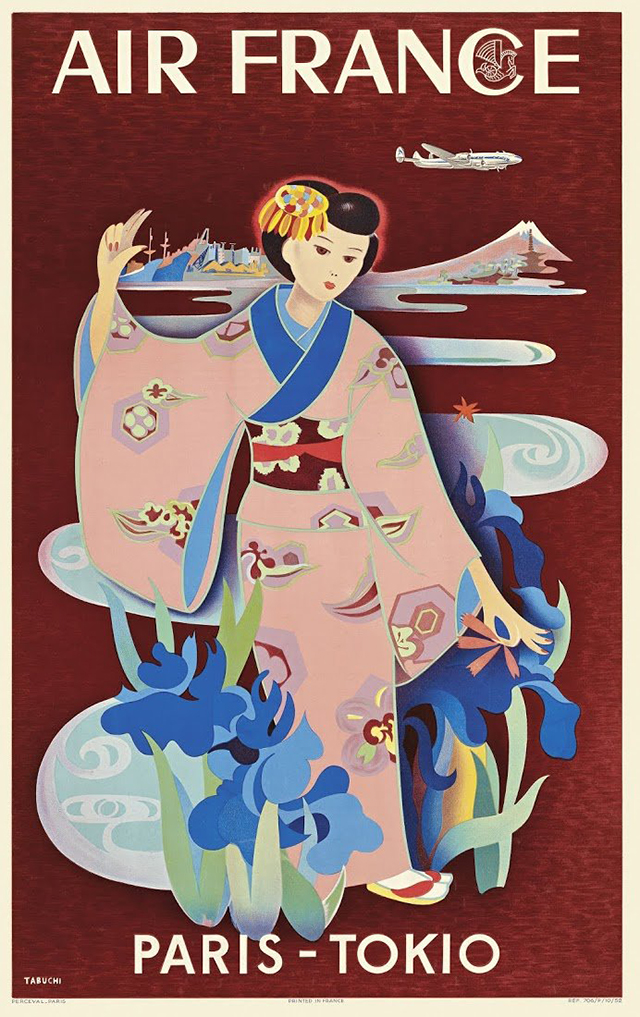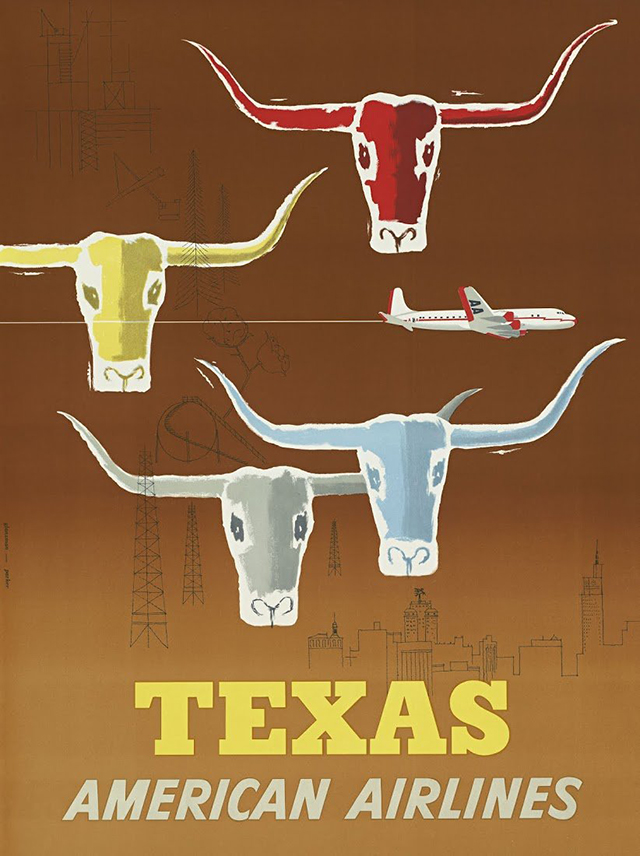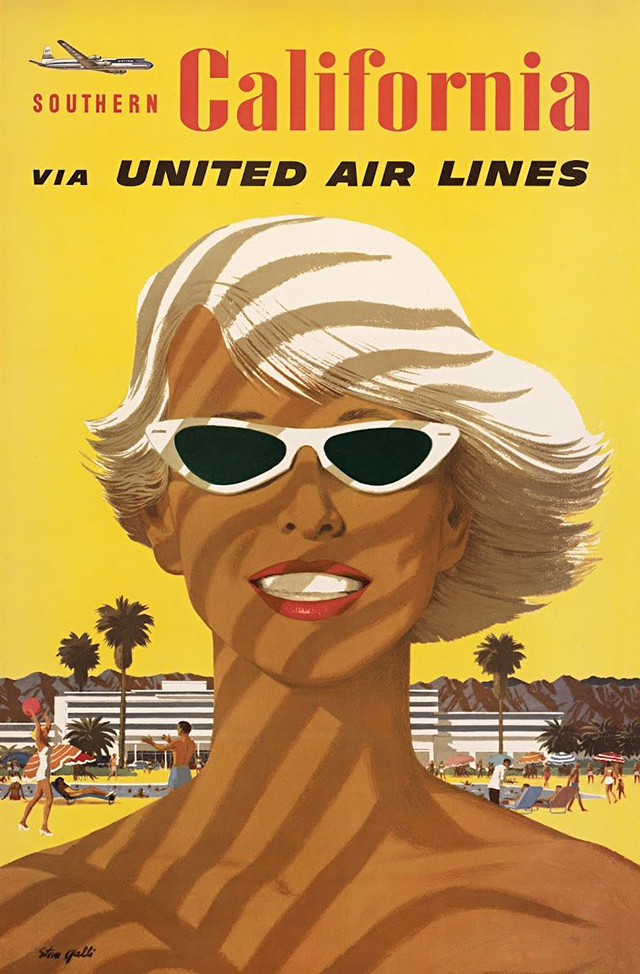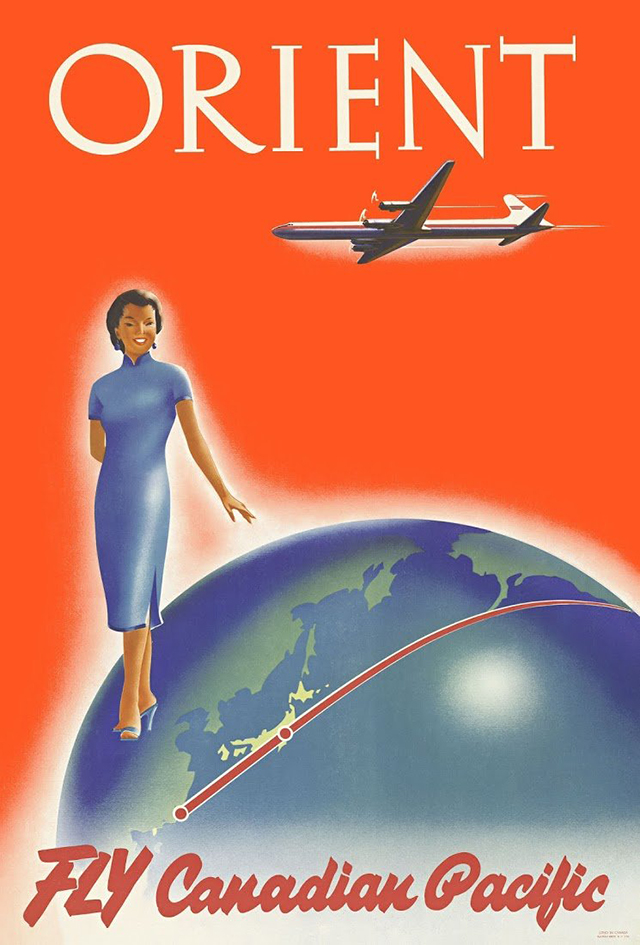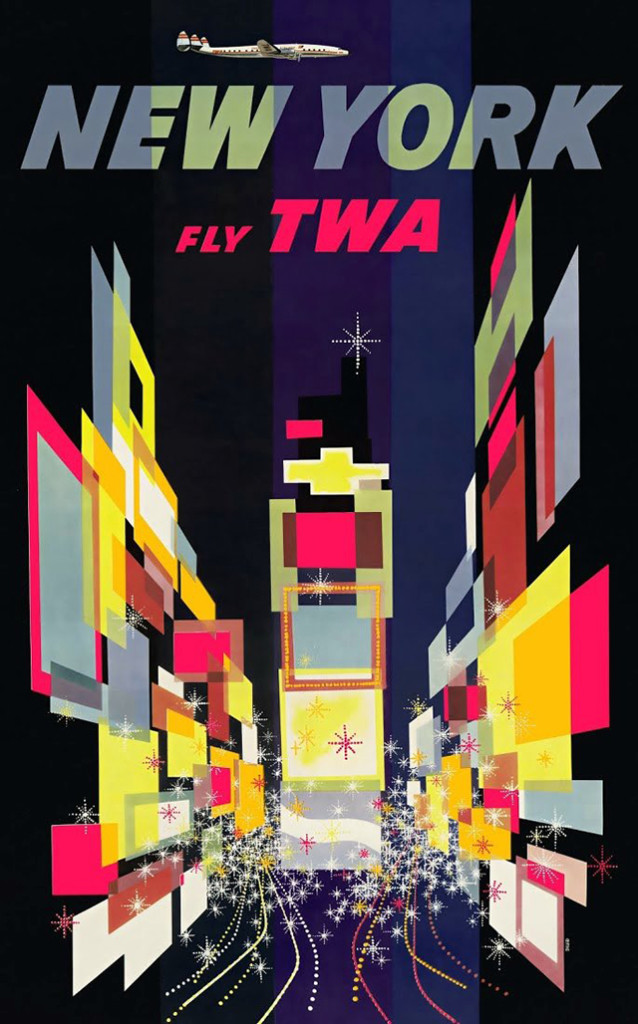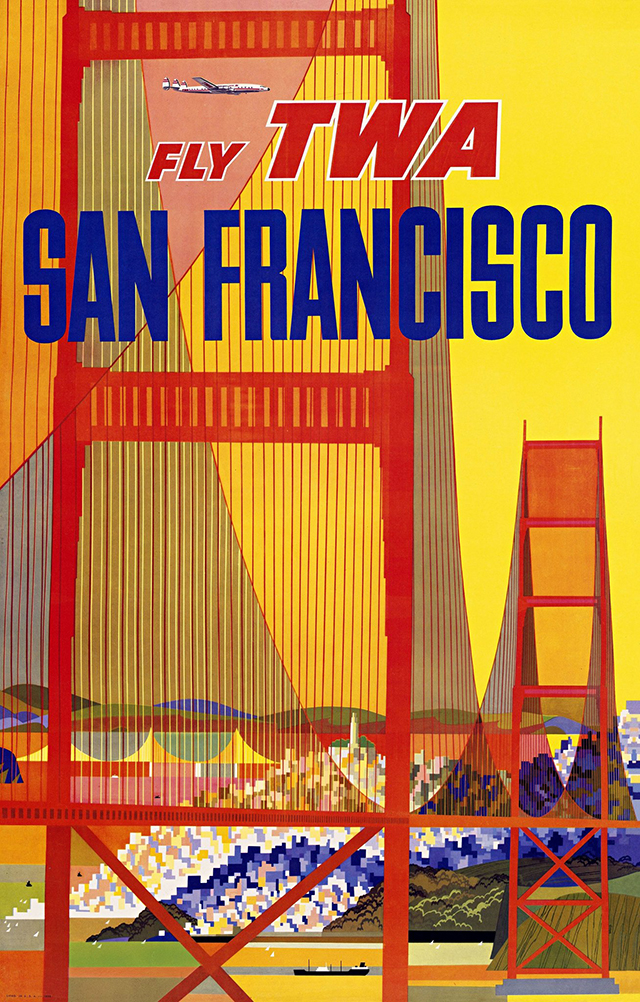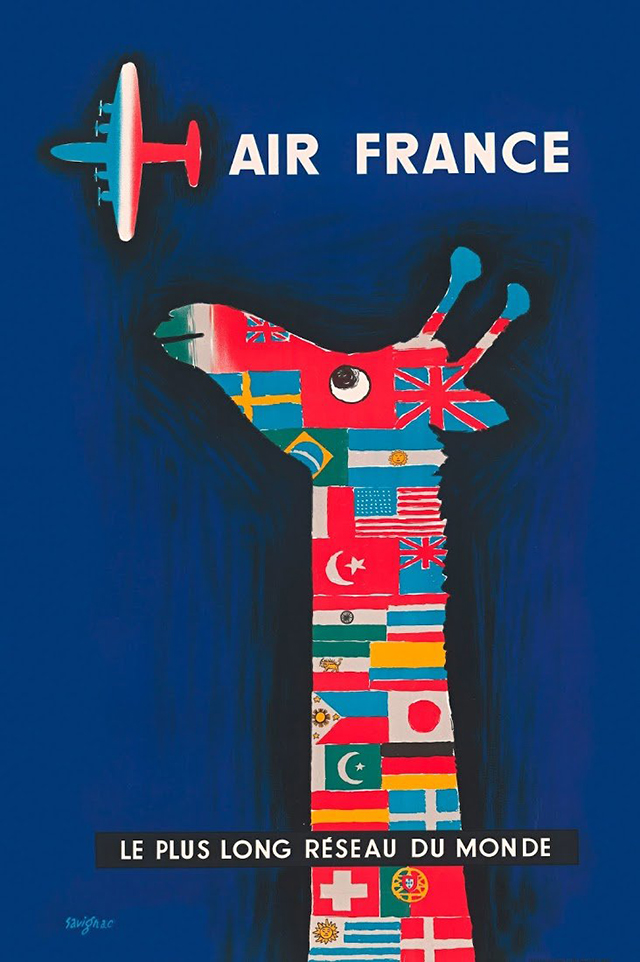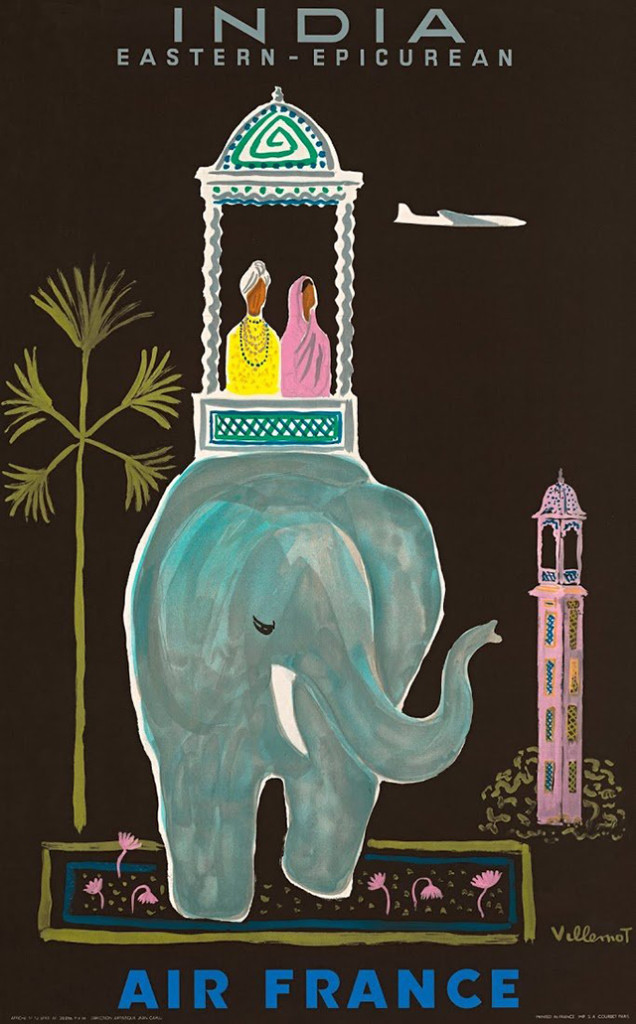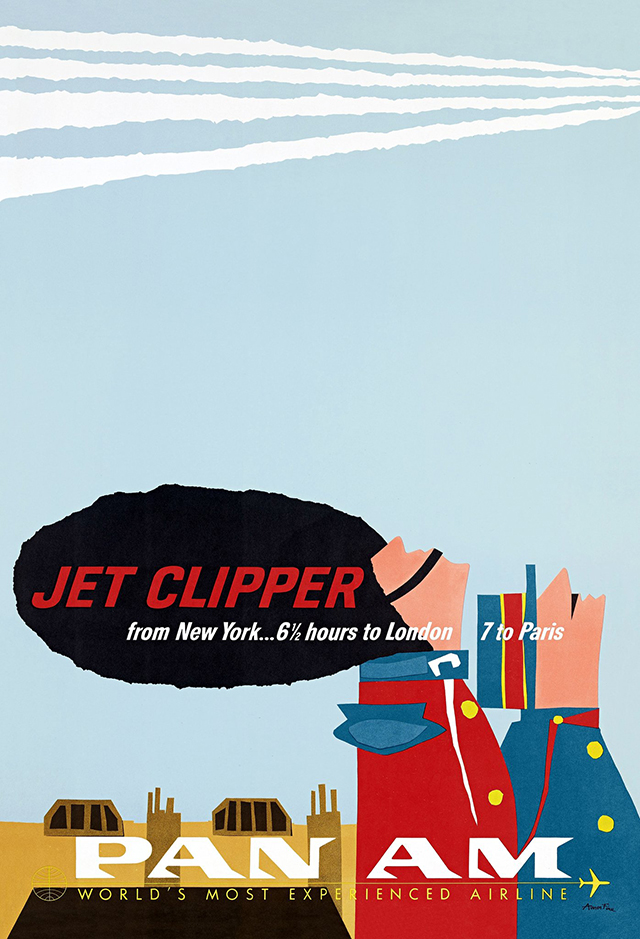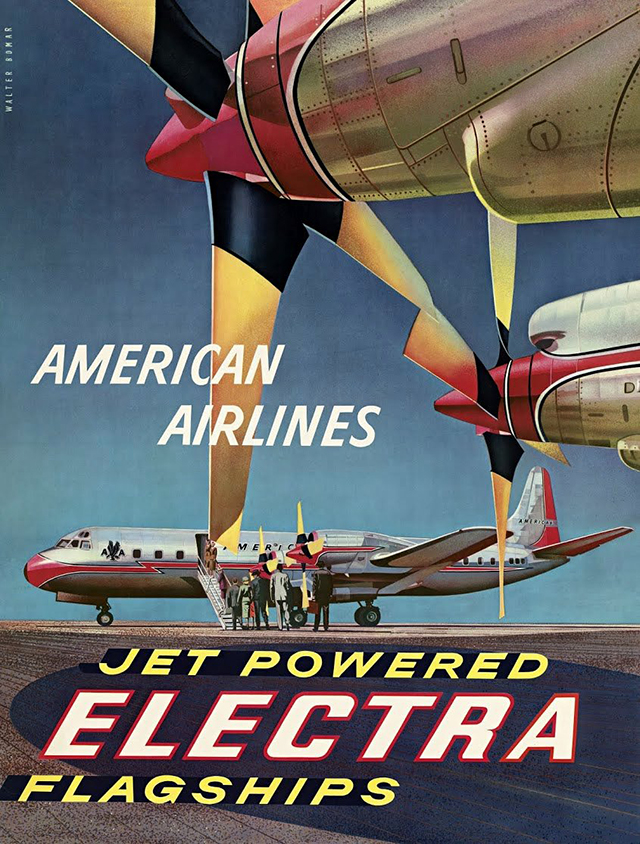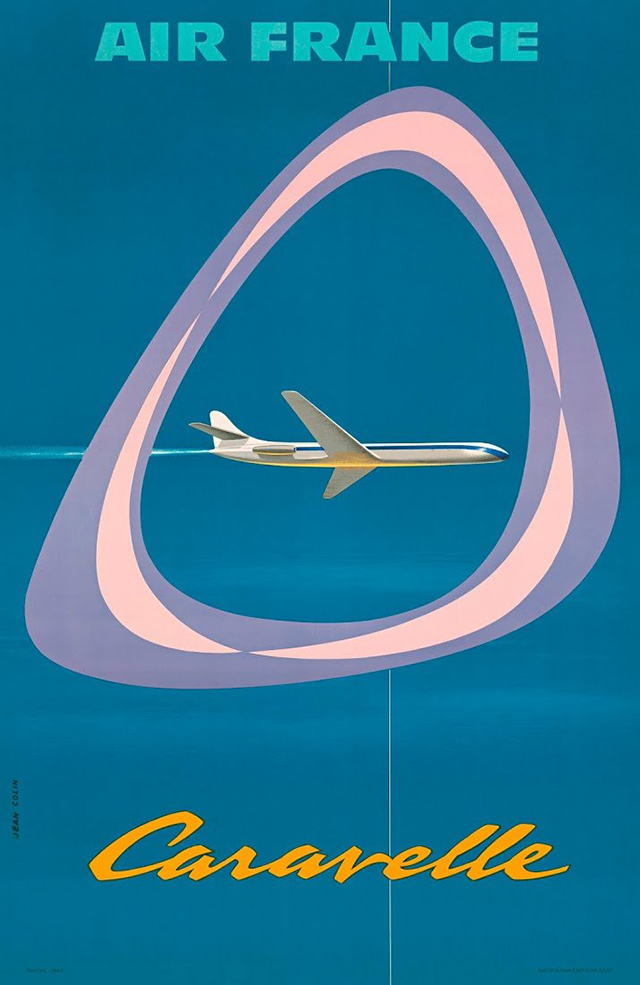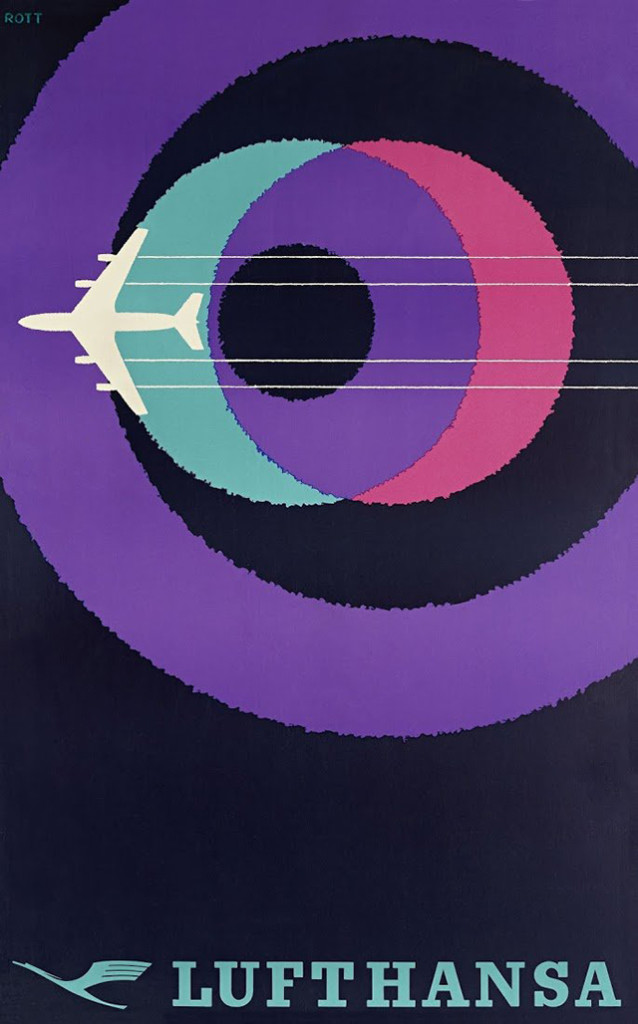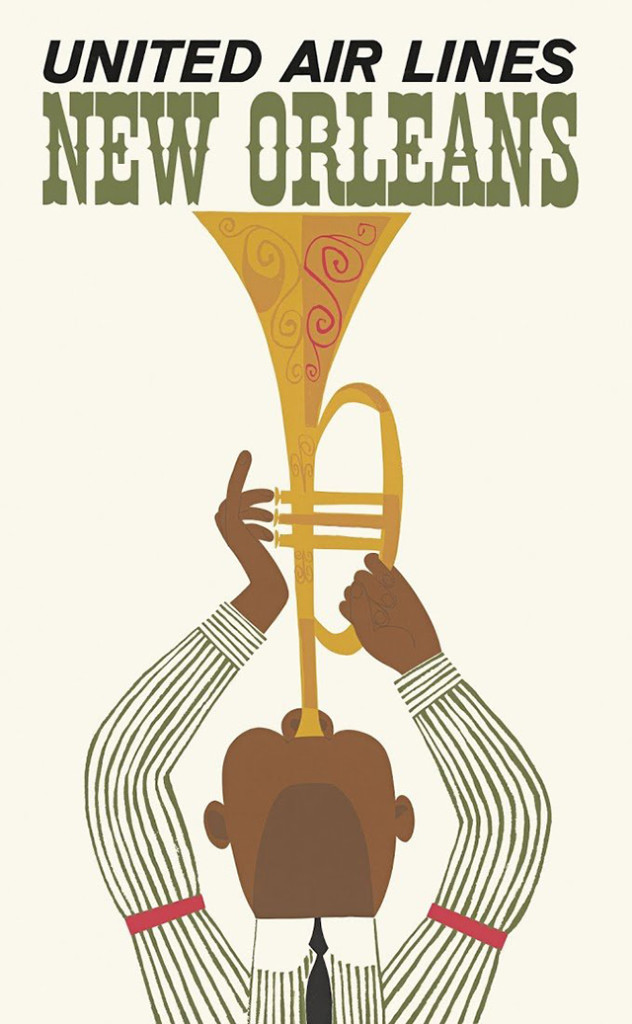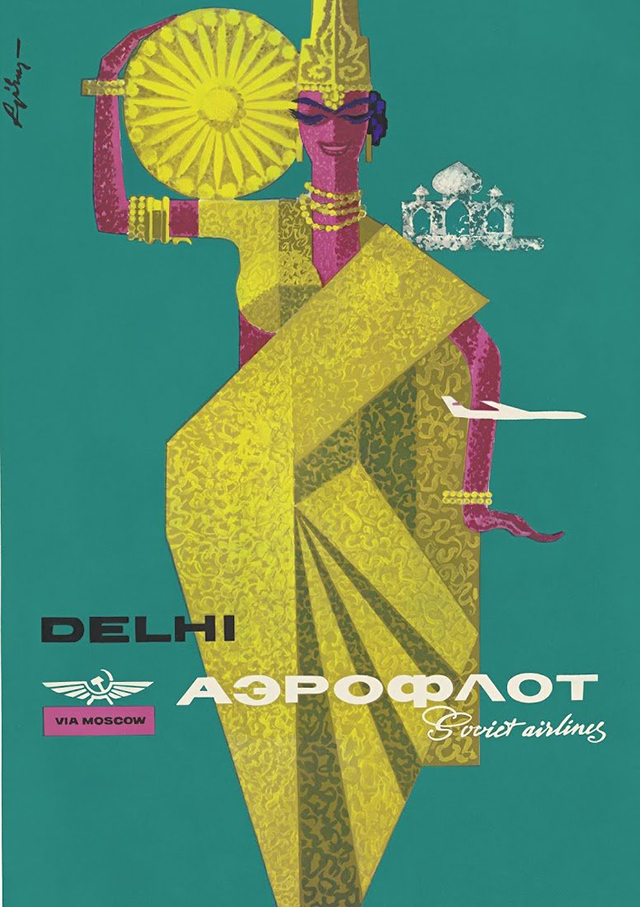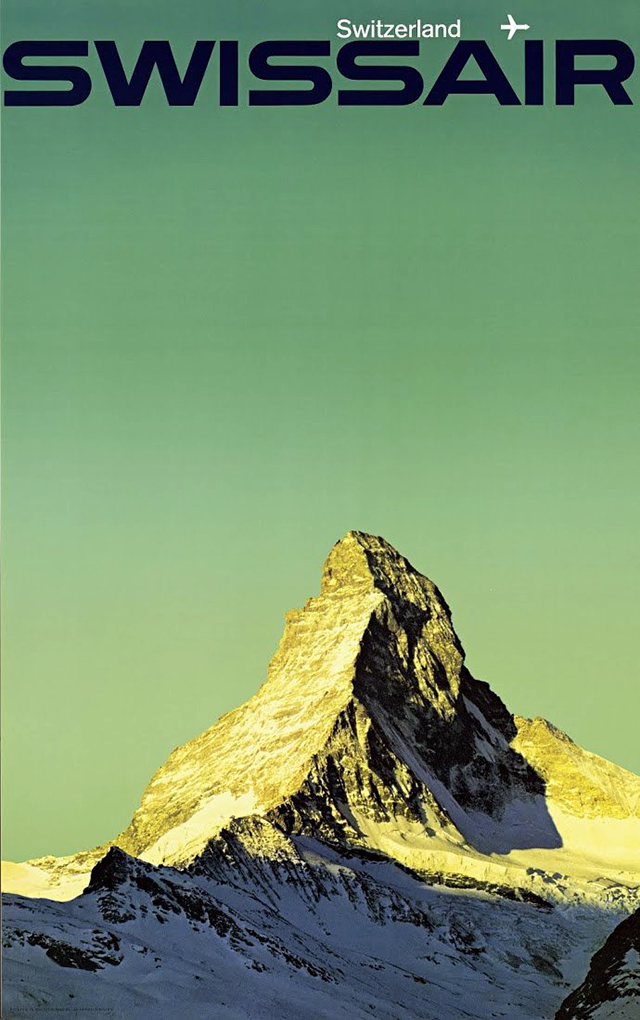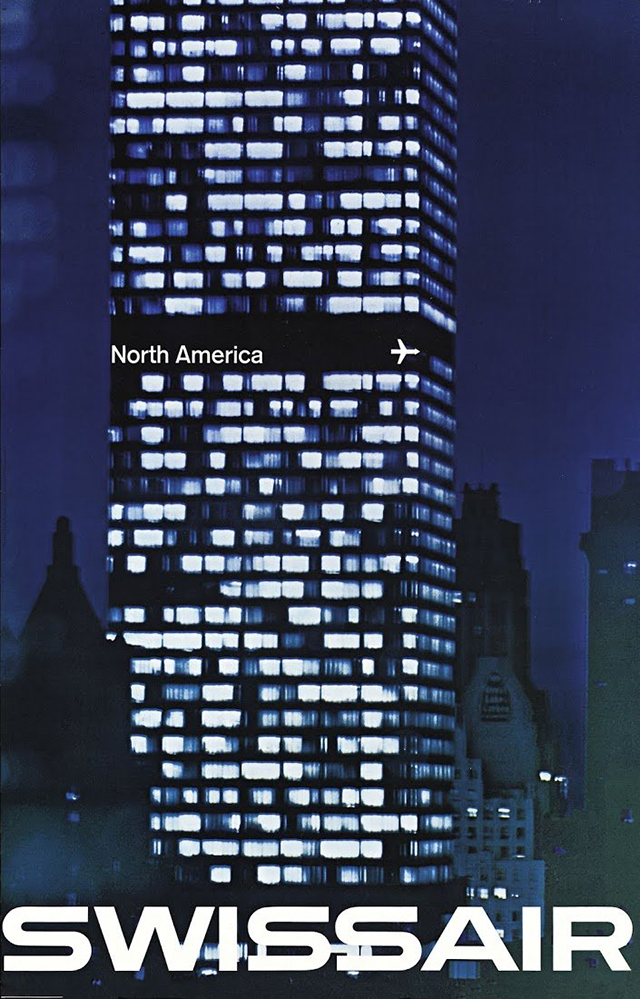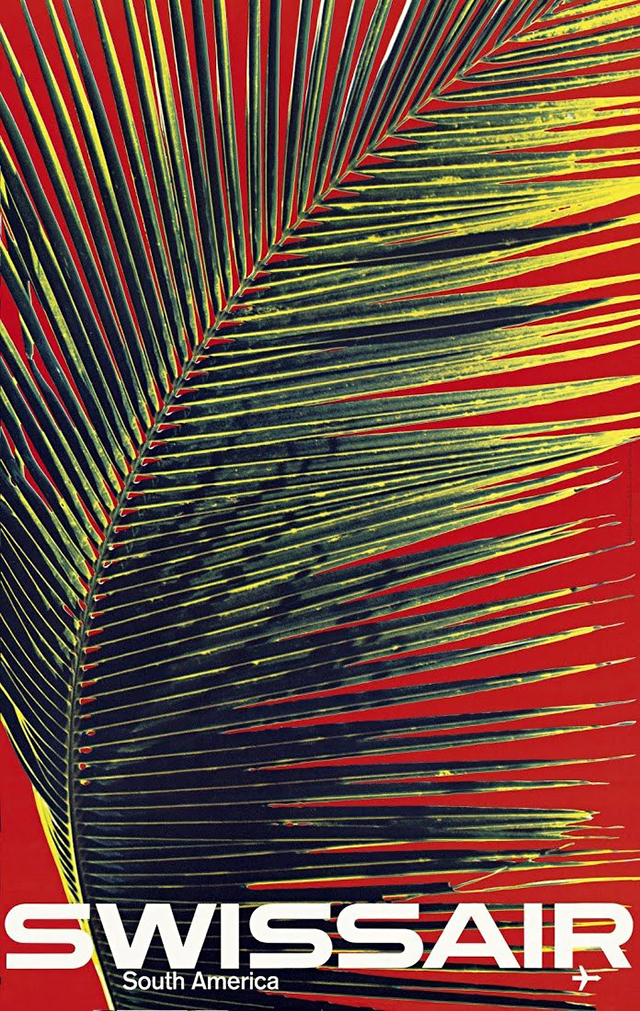These airline posters hark back to a bygone era when flying was an experience only for the well-off. DELAG, Deutsche Luftschiffahrts-Aktiengesellschaft was the world’s first airline.It was founded on November 16, 1909 with government assistance, and operated airships manufactured by TheZeppelin Corporation. Its headquarters were in Frankfurt. The first fixed wing scheduled air service was started on January 1, 1914 from St. Petersburg, Florida to Tampa, Florida. The four oldest non-dirigible airlines that still exist are Netherlands’ KLM, Colombia’s Avianca, Australia’s Qantas, Polish AeroTarg, and the Czech Republic’s Czech Airlines. KLM first flew in May 1920, while Qantas (which stands for Queensland and Northern Territory Aerial Services Limited) was founded in Queensland, Australia, in late 1920.
We revisit a time when the skies were ruled by Pan Am and British Overseas Airways Corp (BOAC) courtesy of a new coffee table book, Airline Visual Identity 1945-1975.
The first French airline was Société des lignes Latécoère, later known as Aéropostale, which started its first service in late 1918 to Spain. The Société Générale des Transports Aériens was created in late 1919, by the Farman brothers and the Farman F.60 Goliath plane flew scheduled services from Toussus-le-Noble to Kenley, near Croydon, England. Another early French airline was theCompagnie des Messageries Aériennes, established in 1919 by Louis-Charles Breguet, offering a mail and freight service between Le Bourget Airport, Paris and Lesquin Airport, Lille
By the early 1920s, small airlines were struggling to compete, and there was a movement towards increased rationalization and consolidation. In 1924, Imperial Airwayswas formed from the merger of Instone Air Line Company, British Marine Air Navigation, Daimler Airway and Handley Page Transport Co Ltd., to allow British airlines to compete with stiff competition from French and German airlines that were enjoying heavy government subsidies. The airline was a pioneer in surveying and opening up air routes across the world to serve far-flung parts of the British Empire and to enhance trade and integration.
The first new airliner ordered by Imperial Airways, was the Handley Page W8f City of Washington, delivered on 3 November 1924. In the first year of operation the company carried 11,395 passengers and 212,380 letters. In April 1925, the film The Lost World became the first film to be screened for passengers on a scheduled airliner flight when it was shown on the London-Paris route.
Two French airlines also merged to form Air Union on 1 January 1923. This later merged with four other French airlines to become Air France, the country’s flagship carrier to this day, on 7 October 1933.
Germany’s Deutsche Luft Hansa was created in 1926 by merger of two airlines, one of them Junkers Luftverkehr. Luft Hansa, due to the Junkers heritage and unlike most other airlines at the time, became a major investor in airlines outside of Europe, providing capital to Varig and Avianca. German airliners built by Junkers, Dornier, and Fokker were among the most advanced in the world at the time.
Imperial’s aircraft were small, most seating fewer than twenty passengers, and catered for the rich – only about 50,000 passengers used Imperial Airways in the 1930s. Most passengers on intercontinental routes or on services within and between British colonies were men doing colonial administration, business or research.
Like Imperial Airways, Air France and KLM’s early growth depended heavily on the needs to service links with far-flung colonial possessions (North Africa and Indochina for the French and the East Indies for the Dutch). France began an air mail service to Morocco in 1919 that was bought out in 1927, renamed Aéropostale, and injected with capital to become a major international carrier. In 1933, Aéropostale went bankrupt, was nationalized and merged into Air France.
